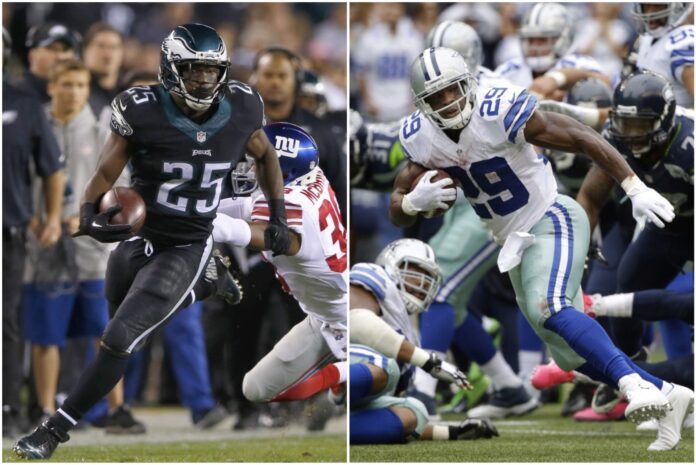In today’s NFL, every team tends to adopt similar concepts, schemes, and philosophies, making it a copycat league. What is the one differentiating factor that gives each team its own respective identity?
Style.
Let’s consider the NFC East as an example. In this division, the Philadelphia Eagles, who were widely favored in the offseason, and the unexpectedly strong Dallas Cowboys both adhere to a common philosophy: their offensive strategies revolve around a robust running game. Even in a league primarily focused on passing, the advantages of structuring an offense around a successful running game are extensive.
A) Staying ahead of the chains
This means keeping your offense in situations of 2nd and 5 or less, and 3rd and 3 or less. In both of these scenarios, there still exists a two-way-go play call. In both of these situations, you have the flexibility to choose either a running or passing play. This relieves the quarterback from the immense pressure of solely carrying the offense’s success and also keeps the opposing defense uncertain about their own play-calling.
B) Takes the edge off of the pass rush
When defending against the run, pass rushers find themselves absorbing the physical impacts of larger offensive linemen engaged in run blocking, which is a reversal of their usual role in pressuring the passer. This is something much more easily appreciated from a player perspective, but the physical requirements of a pass play and a run play are very different for the respective parties…basically flipping who becomes the ‘defender.’
The running game means a defensive front can be worn down from having to play the run where they absorb hits instead of deliver them to pass blockers. Furthermore, pass rushers can’t maintain the same explosive “get-offs” – the quick burst out of their stance – due to fatigue. They also face situations where they must stay more balanced because they are uncertain whether the play will be a run or a pass.
C) Opens up opportunities downfield in the passing game
Defenses compelled to pay extra attention to the running game tend to react strongly to play-action passes, creating opportunities for exploitation, as depicted in screenshot 1. This also necessitates the defense to position more players near the line of scrimmage, as shown in screenshot 2. Consequently, it opens up additional vertical passing lanes to capitalize on.
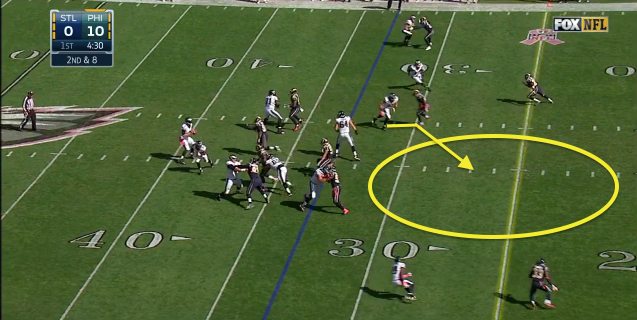

D) Ball control
Running the ball effectively serves to keep the game clock running, which clearly works to the advantage of your defense by limiting the number of scoring opportunities for the opposing offense. Your defense then has to defend fewer plays, which is a significant benefit. A recent example of this was the Dallas Cowboys, who, thanks to a strong and efficient rushing game led by DeMarco Murray, managed to maintain possession of the ball for nearly double the time that the Seattle Seahawks had it in their recent matchup.
The Philadelphia Eagles and the Dallas Cowboys both boast impressive 5-1 records, and the primary driver of their successful seasons is their flawless execution of their running-focused philosophy. This mastery of the running game has set off a series of opportunities for their respective offenses
While both teams excel at running the ball, their approaches are quite unique, showcasing their distinctive styles. To illustrate, the Eagles employ a strategy that involves spreading out defenses by utilizing expansive formations that can extend across the entire field, as depicted in screenshot 3. Their running style is primarily characterized by creating space through their formation choices.
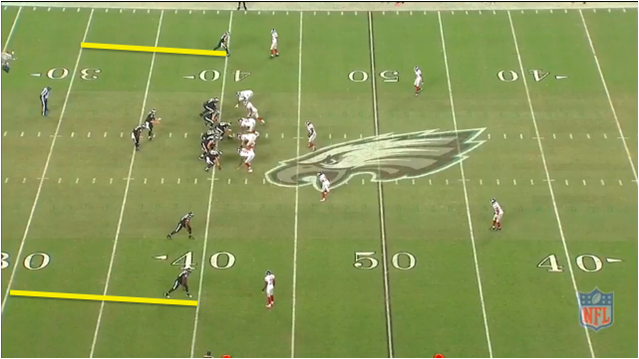
Their strategy is based on a thorough understanding that their running backs, Lesean McCoy and Darren Sproles, possess exceptional speed and agility, making them better suited to thrive in open space and outside of the offensive tackles rather than between them. Additionally, the Eagles have designed their offensive line to be more agile and less focused on brute force.
Imagine Hall of Famer Larry Allen in a no huddle system. His playing weight would’ve been 295 instead of 325. By using the spread formations, the Eagles are able to spread out defenders, creating space for their (relatively) nimble offensive lineman to block in, and their jack-rabbit like runners to burst through.
To make the most of spread-out defenses, the Eagles effectively exploit the perimeter using a range of tactics, exemplified by the “toss” play (Screen shot 4) and the perimeter counter play (Screen shot 5). Both plays result in big gains.
One of the cornerstones of style is being comfortable with yourself…being the best version of you. The Eagles style says “we are faster and more athletic than you in space.” They understand who they have, who they are, and who they need to be. They deliver on the style that fits them best.
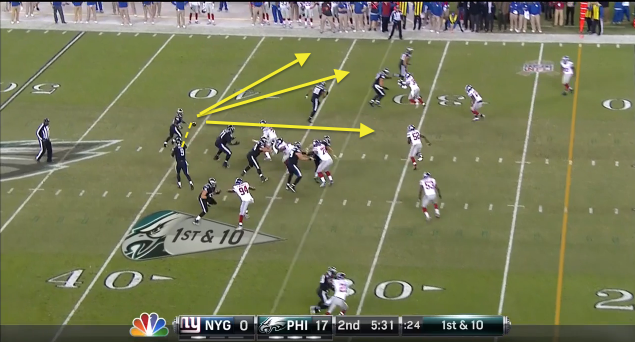
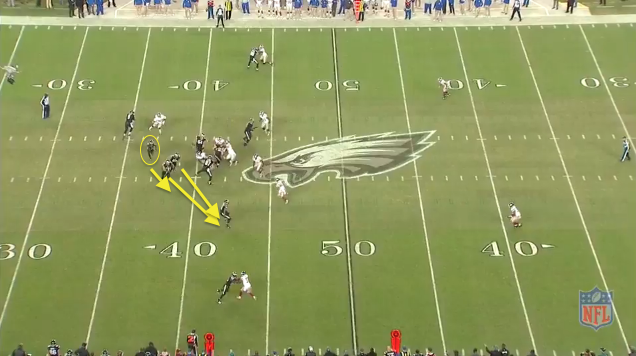
The Cowboys on the other hand do exactly the opposite from a style point of view. They condense the formations (screen shot 6) and utilize their power running back Demarco Murray, along with their hefty, hard-hitting offensive line, to execute a forceful running game right through the middle. Essentially, the message the Cowboys convey is, “we are physically superior and more aggressive than you, and we intend to overpower you.” Their belief is that this style aligns most effectively with the composition of their team and roster. Recent outcomes seem to support their assessment.
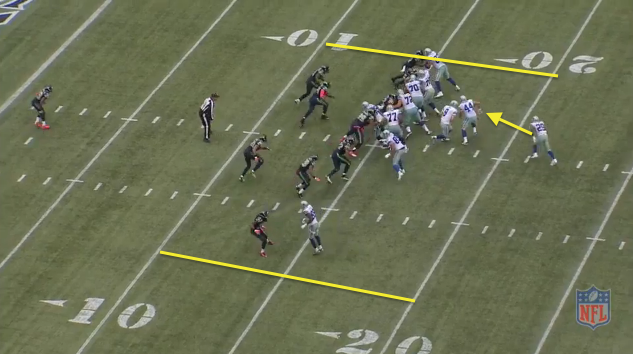
Although the Eagles and the Cowboys have two contrasting styles, both are finding a lot of team success because first and foremost, they run the ball very effectively.
One thing to look for as these teams move forward: if either one of these teams begins to struggle winning games, that most likely means that they are struggling to run the ball as well.
The Eagles and Cowboys have embraced their unique running styles to this point in the young NFL season. Their future success may hinge on their ability to continue doing so.

